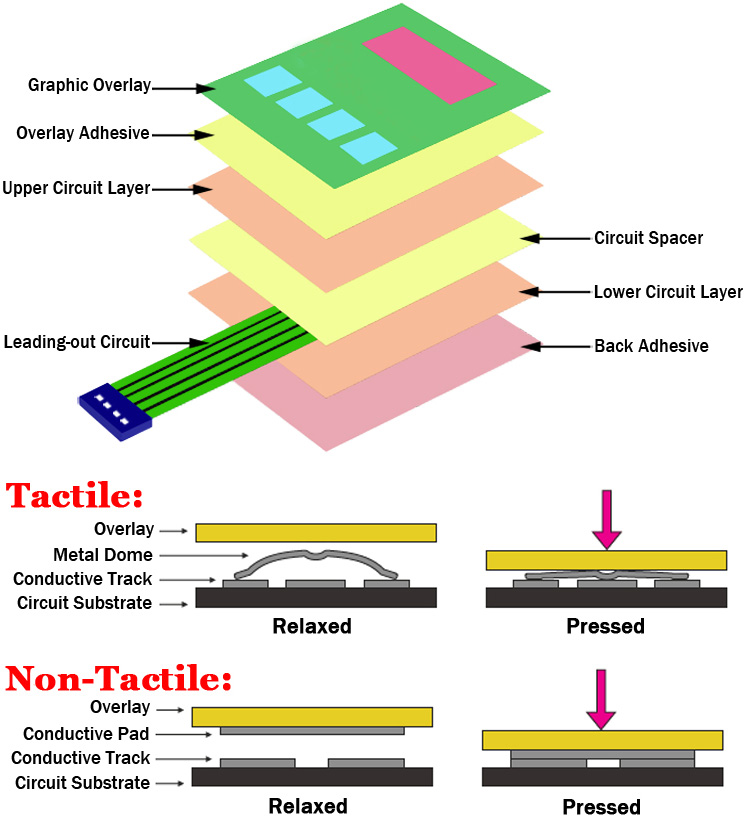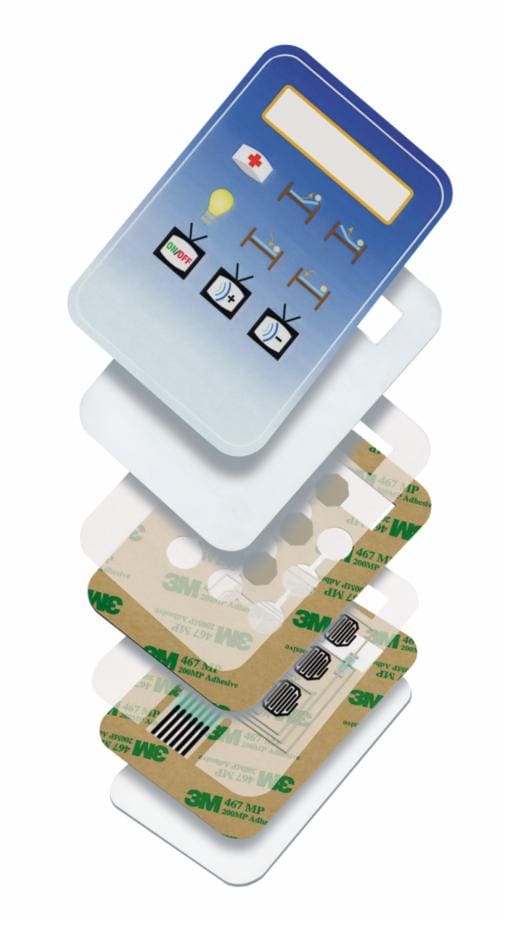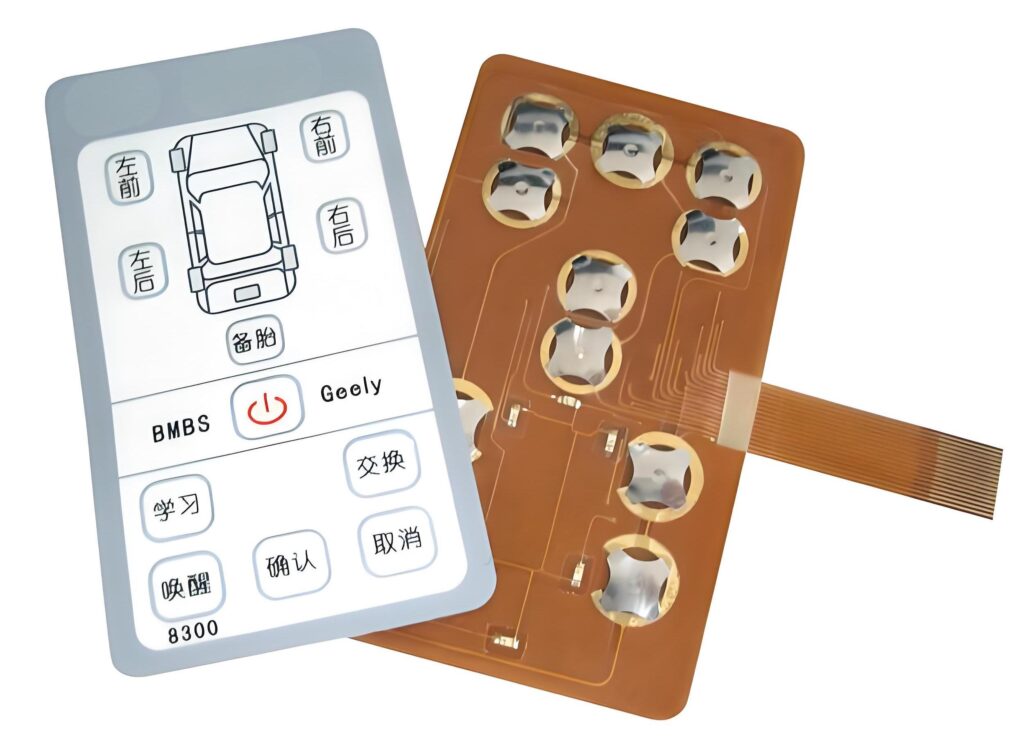The Production Refine Behind Membrane Change: What You Required to Know
The manufacturing procedure behind membrane layer switches over combines cautious design, product option, and top quality control. It begins with recognizing the details of membrane layer button design and advances through various stages, including product options and printing methods. Each phase plays an important role in ensuring capability and longevity. However, the complexities of layer construction and the rigorous screening criteria might disclose insights that are not promptly evident. What exists beyond these fundamental aspects?
Comprehending Membrane Layer Switch Over Style
Membrane buttons might appear easy at initial glance, their style involves complex factors to consider that assure capability and sturdiness. The style process starts with a detailed understanding of customer demands, consisting of the interface's desired application and ecological elements. Ergonomics is a crucial element, as the format needs to facilitate convenience of use while ensuring that responsive responses fulfills customer expectations.Moreover, the layering of elements, such as graphic overlays, adhesive layers, and conductive traces, need to be precisely engineered. membrane switch. This split setup not only influences the button's responsiveness but also impacts its longevity. Interest is offered to the sealing techniques utilized to secure versus moisture and dirt, which might compromise efficiency. In addition, design factors to consider include aesthetics, where color pattern and aesthetic clearness enhance individual experience. Inevitably, the style of membrane layer switches balances functionality, individual experience, and sturdiness, making sure that they satisfy the demands of numerous applications properly
Products Utilized in Membrane Change Production
When picking materials for membrane switch manufacturing, it is necessary to consider both efficiency and longevity. The main materials include polyester and polycarbonate films, which provide flexibility and strength. These films are commonly covered with sticky to assure appropriate bonding to substratums. Conductive inks, generally composed of silver or carbon, are critical for creating electrical links within the switch, allowing for dependable operation.Additionally, a protective layer, such as a difficult layer, is regularly applied to boost scrape resistance and durability. The option of backing material, such as acrylic or foam, can significantly affect the button's tactile feel and general individual experience. Additionally, numerous ecological factors, including temperature level and humidity, need to assist product choice to guarantee peak efficiency in specific applications. Ultimately, the appropriate mix of products adds to the membrane layer button's performance and life-span, making informed choices crucial for suppliers.
The Printing Process: Creating Video and Text
The printing process in membrane layer button manufacturing plays a substantial function in generating premium graphics and message. Different visuals layout techniques are used to ensure aesthetic charm and performance, while careful ink option techniques are crucial for durability and efficiency. Comprehending these aspects is fundamental for achieving ideal results in membrane button layout.
Graphic Style Techniques
Graphic design methods play a crucial role in the printing process of membrane buttons, as they define just how graphics and text will inevitably show up on the end product. Reliable graphic layout involves the tactical use of formats, typefaces, and colors to enhance readability and visual charm. Developers frequently use vector graphics for scalability, making certain that pictures continue to be sharp at different dimensions. Additionally, focus to comparison and positioning is important, as it influences individual interaction and visual high quality. The incorporation of branding elements, such as logos, have to be taken care of with like keep brand name integrity. Overall, thoughtful visuals layout strategies add significantly to the performance and beauty of membrane layer switches, influencing individual experience and item efficiency.
Ink Choice Approaches
Choosing the ideal ink is important for accomplishing the wanted aesthetic high quality and longevity in membrane layer button manufacturing. Different ink types are utilized, consisting of solvent-based, water-based, and UV-curable inks. Each kind provides distinct attributes, such as adhesion, resistance, and versatility to ecological aspects. Solvent-based inks are commonly preferred for their longevity and vibrant colors, while water-based inks are a lot more eco-friendly but might have limitations in attachment. UV-curable inks offer rapid curing and durable performance. Furthermore, color matching techniques assure that the chosen inks align with design requirements. Ultimately, the choice of ink must think about elements such as application method, substratum compatibility, and end-use needs to accomplish exceptional lead to membrane layer switch graphics and message.
Layer Building And Construction and Assembly

Product Option Process
A mindful choice of products is crucial in the production procedure of membrane switches, as it directly affects performance and toughness. The key products used include polyester, polycarbonate, and different conductive inks. Polyester is typically preferred for its exceptional resistance to chemicals and abrasion, making it ideal for extreme atmospheres. Polycarbonate, on the various other hand, provides superior clearness and influence resistance, which is advantageous for applications calling for visibility and robustness. Conductive inks, commonly made up of silver or carbon, are essential for creating dependable electric paths. Additionally, the selection of glue materials influences the overall stability of the button - membrane switch. Examining variables such as environmental exposure, responsive comments, and visual demands overviews makers in selecting the best products for their specific applications
Layer Bond Techniques
Sticking layers in membrane switch building is an important procedure that ensures performance and durability. Numerous bond methods are employed to safeguard ideal bonding between layers, which generally include the use of adhesives, warm, and pressure. Pressure-sensitive adhesives (PSAs) are typically utilized for their ease of application and prompt bonding capacities. Furthermore, thermal bonding methods can be used, where warmth is utilized to turn on sticky residential or commercial properties, protecting a solid bond. The choice of attachment technique mainly relies on the products included and the details application requirements of the membrane layer button. Proper placement and uniform application of adhesives are important to avoid problems, securing the button operates effectively throughout its intended lifespan.
High Quality Control Procedures
Assuring quality control you could check here throughout the layer building and construction and setting up of membrane layer buttons is necessary for keeping performance and reliability. This procedure normally involves a number of crucial actions, including detailed evaluations at each phase of production. Suppliers use advanced screening approaches, such as peel examinations and adhesion evaluations, to confirm the integrity of layer bonds. Furthermore, aesthetic examinations are conducted to determine any problems in printing or material disparities. Environmental problems, such as temperature and humidity, are meticulously kept an eye on to guarantee perfect healing and bond. Furthermore, normal calibration of devices aids preserve precise manufacturing standards. By applying these high quality control steps, makers can substantially lower the danger of item failure, ensuring that the last membrane layer changes satisfy the called for specs and client assumptions.
Examining and Quality Assurance Procedures

Innovations in Membrane Change Modern Technology
As improvements in innovation remain to advance, membrane switches are benefiting from ingenious advancements that boost their capability and individual experience. One notable technology is the integration of capacitive touch modern technology, which permits even more responsive and intuitive interface. This change not only boosts looks but also reduces mechanical wear and tear, extending the lifespan of the switches.Additionally, advancements in visuals overlay anonymous products have caused enhanced toughness and resistance to environmental aspects such as moisture and UV light. These materials currently use improved clearness and brightness, further boosting the visual appeal.Furthermore, the consolidation of smart technology is changing membrane switches over right into interactive control board, making it possible for connection with IoT tools. This connection fosters a seamless user experience, leading the way for applications in different markets, from healthcare to consumer electronics. Collectively, these advancements setting membrane layer switches as important components in modern-day tool layout.
Frequently Asked Inquiries
Just how Long Does the Membrane Layer Switch Over Production Refine Take?
The period of the membrane layer switch manufacturing process can vary considerably. Variables such as intricacy, materials used, and manufacturing volume influence timelines, with common manufacturing varying from a few days to several weeks for conclusion.
What Are the Common Applications for Membrane Layer Buttons?
Membrane layer switches are commonly used in various industries, including automotive controls, home appliances, medical tools, and consumer electronic devices (membrane switch). Their adaptability and resilience make them perfect for applications needing easy to use interfaces and reputable efficiency in diverse environments
Can Membrane Layer Switches Over Be Custom-made for Certain Needs?

What Is the Life expectancy of a Common Membrane Switch Over?
The life-span of a common membrane switch differs, however typically, it varies from 1 to 5 million cycles. Factors such as use, setting, and material high quality this website greatly influence longevity and overall efficiency with time.

Are Membrane Changes Eco-friendly?
The environmental friendliness of membrane switches over differs. Some products utilized might not be recyclable, while others can be environmentally friendly. The overall effect depends on producing practices and products, requiring careful factor to consider throughout choice and disposal. The manufacturing procedure behind membrane switches over combines cautious style, material option, and high quality control. It begins with comprehending the intricacies of membrane layer switch layout and proceeds via different phases, consisting of material selections and printing techniques. When picking materials for membrane button manufacturing, it is crucial to consider both efficiency and durability. A mindful option of materials is important in the production procedure of membrane layer buttons, as it straight influences capability and sturdiness. The choice of bond approach mainly depends on the materials entailed and the details application demands of the membrane layer switch.
Comments on “Why membrane switch is key to innovation in aerospace control systems”